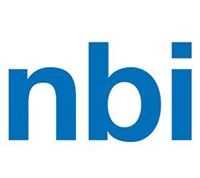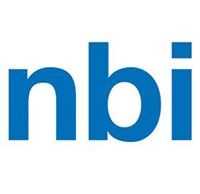Foreclosure is the legal process the financial institution having an interest on your mortgage loan can initiate to take away your house if you are in default. Foreclosures can be initiated by anyone who has a lien on your house, including your lender or the county (if you don’t pay property taxes).
There are two common types of foreclosure processes in Oregon – judicial and non-judicial. The most used process in this state is the non-judicial, where the document securing the loan is a “Deed of Trust.” The parties involved in this model are: the financial institution or “beneficiary,” which is the institution you owe the money to; the “trustee,” which is the neutral party to whom you conveyed or “transferred” temporarily the title of your house to be hold in trust until your loan is paid off; and you as a borrower or “trustor/grantor.”
One of the most important components of the foreclosure process is the proper procedures of notification. For purposes of illustration, we will briefly discuss the process of foreclosure by “advertisement and sale,” which will start if you, the homeowner, are not making your mortgage payments as agreed and they have been continuously late for at least 60 to 90 days. After trying to contact you to have you bring your mortgage payments current, the financial institution will give instructions to the trustee to start the foreclosure process or, in lending jargon, “accelerate” the loan. First, the trustee will send out a notification of sale to you and all parties with an interest in the property. This notification lets you know your home is in the foreclosure process and it will be filed in the county or counties where your house is located. At this point the information about the loan in default and the foreclosure process becomes public information.
The notification of sale should include the following:
- Your name(s) and address, the names of the trustee and financial institution.
- The legal description of the property and often the commonly known address
- Information about the records within the county where the notification of sale has been recorded
- The reason why your house is in foreclosure
- The total amount(s) owed
- The decision made to sell the property to satisfy the debt
- The date, time and place of the sale
- Your rights under state law to stop the foreclosure process if you bring your loan current, including paying expenses incurred by the financial institution to cover the foreclosure process.
You have the right to reinstate your loan by bringing your loan current, in addition to paying the expenses mentioned above, but you should do this no later than 5 days before the sale (auction date) of the house.
At least 20 days prior to the sale of the property, the trustee should publicize for the last time the sale/auction in a local newspaper in the county or counties where the property is located. The publication will also include the date, time and place where the sale of the property will take place.
The buyers of the property will be entitled to take possession of the property ten (10) days after the auction date. Anyone interested, including yourself, may present a bid to buy the house.
Proper procedures of notification must be followed. You will receive in your annual property tax statements the notification about when your house is subject to foreclosure.
What if my house sells for less than I owe?
Under current tax laws, if your house is sold at auction or is transferred to the lender and the amount for which it was sold or transferred is not enough to cover the balance of your loan, the financial institution, with certain exceptions, may have to cancel or forgive the balance between the fair market value of the house and the amount you owe. This balance or deficit is also known as “cancellation of debt.” The institution will file the applicable IRS forms with the amount(s) owed and other relevant information. You will receive a copy of the applicable 1099 form(s) in reference to the amount “forgiven.” With certain exceptions, you may have to include this amount as part of your income when you file your income taxes. Talk to a tax adviser about the potential impact on your tax filings.
How can I save my house?
Most lenders and financial institutions have loss mitigation programs and may offer you a temporary or permanent solution, depending on your financial situation.
It is crucial that you contact your lender or financial institution as soon as you foresee problems in making your mortgage payments. Make sure that any agreements you make with your financial institution are in writing and make every effort to meet the arrangements you agreed on.
The Federal Housing Administration (FHA) launched a program called “FHA Secure.” This program is intended to provide the option to refinance a non-FHA loan that became delinquent because of adjustments on variable interest rates.
Contact an FHA-approved lender to see if you qualify for this new loan program.
What are foreclosure scams?
Homeowners facing foreclosure should beware of foreclosure scams. Scammers can cause you to lose both your home and the equity you have built. Many scammers contact homeowners offering to “save” their houses. Information about your property is a matter of public record and fairly accessible by anyone interested in obtaining it. In addition to the information recorded with the county when you bought your house, notifications of default filed by the lender or a lien holder or if the house is subject to an auction or to be foreclosed are all public record.
Unfortunately, unscrupulous individuals can use this information to take advantage of homeowners in distress. Other times, homeowners facing foreclosure may respond to ads offering to pay cash immediately for houses. Although this sounds like a quick solution, it may not be the right option if your ultimate goal is to keep your home. And you need to be very careful, because many of these offers may also be scams. Scammers are particularly interested in properties where homeowners have been living for a long time or there is an indication the homeowner has built a significant amount of equity. The schemes vary depending on what the scammer is trying to obtain.
For example: Scammers advertise their services to negotiate with the lender on behalf of the homeowner to save the house. They often collect fees up-front, usually one month’s mortgage payment. The scammers prohibit the homeowner to contact the lender so the process will not be “disrupted.” In many cases, the scammers do very little or nothing to help consumers. In other cases, scammers will convince the homeowner to convey or give up the title of the house with the promise to return the house after it has been taken out of the foreclosure process. Scammers commonly pay the homeowner an amount significantly less than the real value of the home, sometimes as little as $1. In some cases, the deal includes a rental agreement where the homeowner pays rent, which can be more than the original mortgage payment. The homeowner is still responsible for the payment of taxes, insurance, and other obligations as if nothing has changed except for the ownership of the house. Since the homeowner no longer has the title, the scammer can evict the homeowner if he or she does not pay the rent.




